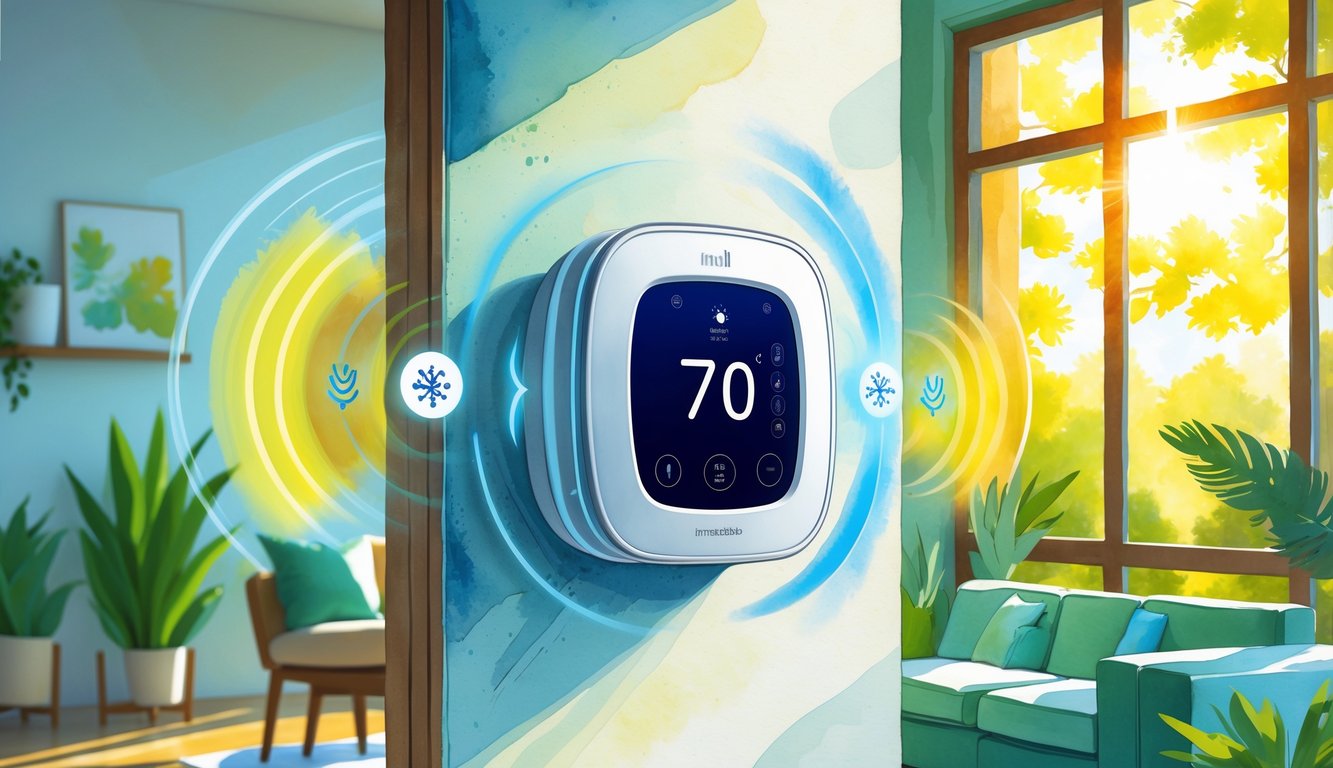
Top Smart Thermostat Brands and Their Innovations

Whenever I start poking around my bills or googling how to not get ripped off, it’s always the same brands: Ecobee, Nest, Honeywell. Seriously, if someone says there’s a fourth big player, I’d want proof they’re not just using a discontinued app from 2017. I’ve never seen a window upgrade ping me for vacation mode, either, but whatever. Here’s what I actually care about, as someone who counts pennies and is trapped in the Apple ecosystem (help).
ecobee
Okay, so my neighbor used to mock wall-mounted voice assistants, but then she saw the Ecobee Smart Thermostat Premium’s radar sensors in action—honestly, they react faster than her kids. Consumer Reports just reviewed this thing, and yeah, the radar beats infrared. No more lights shutting off while I’m reading. That always made me irrationally angry.
Now every Ecobee has Alexa built in, so I can yell at it from the couch and it listens (unlike my actual family). The newer ones even work with Apple HomeKit, which is basically required if you’re deep in iPhone land. The SmartSensor add-ons? They chase down cold spots like little HVAC detectives. I trust Ecobee’s WiFi connection more than my own memory—after a week away, all my stats are there. Did I ask for them? Not really. Still, it’s weirdly comforting.
One time I lost WiFi for a day, and the app still updated my schedule when I got back online. If only my bank app cared half as much about real-life chaos.
Nest
Walk into a random kitchen, see the round Nest dial, and you know: these people bought the “AI learning” hype. The fourth-generation Nest Learning Thermostat (yeah, PCMag 2025 still raves about it) actually needs less babysitting than the old ones. It “learns” my patterns—like, if I get home at six or blast the AC every Sunday, it just… figures it out. Sometimes it gets it wrong, which is honestly creepy.
Google keeps shoving tighter Google Home integration at us, so if you’re already on Android, Nest is easy. But if you want it to play nice with Apple HomeKit? Nope, forget it. The app is fine, I guess, but good luck finding the advanced settings—they hide everything “for simplicity.” I suspect that’s code for “don’t touch.”
And here’s my gripe: these energy reports are only useful if someone actually reads them. If no one does, does it even matter? Nest’s auto-away and geofencing mean I don’t have to text my partner to turn off the AC, so, sure, fewer arguments.
Honeywell
Honeywell RTH6580WF—everyone on a budget recommends it, and apparently some HVAC pros still love them. The price stays under $100 (Tom’s Guide hammered that home), so it’s the only “smart” thermostat I’d even suggest to my cousin who thinks WiFi is a government plot. It’s not as slick as Ecobee or Nest. The display? Looks like an alarm clock and a spreadsheet had a baby. Kind of charming, in a sad way.
But here’s what barely gets mentioned: Honeywell’s app support is a mess, but it almost never fails—at least on Android. I tried Apple integration and immediately regretted it. Works, but it’s barebones. Some models play nice with Alexa, but the basic ones expect you to set everything old-school, which is fine if you’re into that.
Honestly, after a night spent staring at wiring diagrams, I realized Honeywell thermostats are everywhere in rentals and offices. They never die, nobody complains. Not sexy, but sometimes you just want to forget the thing exists.
Smart Thermostats vs. Programmable Thermostats
Nobody warns you that buying a programmable thermostat means you’ll have to drag out the manual every six months just to change your schedule. I used to mash buttons, listen to those little clicks, and wonder why my friend’s smart thermostat acted like it owned the place.
Ease of Use and Control
Six buttons, two menus, and the clock’s always blinking “12:00”—because I hit the wrong thing again. I swear, you need a degree just to program a weekday routine on some old Honeywell. With a smart thermostat, I’m in bed, phone in hand, adjusting the temp at 3 a.m. and not even mad about it.
Remote control is where it gets real: left work early, cranked the AC before I got home, and walked into a house that wasn’t an oven. No sticky notes, no frantic reprogramming. Plus, smart integration means Alexa, Google, and even my weird IFTTT hacks work. Programmable thermostats can’t do that—unless yelling at your partner to fix the temp counts as “automation.”
Adaptive Learning and Scheduling
This is where it gets wild—my programmable thermostat never learns anything. If I forget vacation mode, I might as well just cool the whole neighborhood. My smart thermostat, though? It notices when I leave, drops the temp before I get home, and then emails me a smug little report. Some brands (Ecobee, for one—Energy Star even says so) claim up to 20% savings.
Does it feel like giving up control? Maybe. But those learning routines save me at least 10% a year, according to the Department of Energy. I don’t have to keep up with every plan change; the thing figures it out faster than I can. Meanwhile, my programmable thermostat forgot Daylight Savings and blasted the heat during a July heatwave. Not cheap, and my wallet still holds a grudge.
Energy Star Ratings and Rebates for Smart Thermostats
I keep circling back to this: picking the right ENERGY STAR smart thermostat is nothing like buying bananas or socks. The stakes are way higher—your electric bill, summer misery, all that. ENERGY STAR matters (the Department of Energy is obsessed with it), and rebates are everywhere, if you’re willing to dig through endless forms.
Understanding ENERGY STAR Certification
I used to think the blue ENERGY STAR logo was just more marketing noise. Then I saw a DOE study: certified models actually save 8% or more on cooling, not just “up to 8%” like the ads say. My neighbor—who’s convinced apps are spying on him—set up an ENERGY STAR thermostat and showed me his bill: $134 less, despite running the AC like he’s part polar bear.
Not all of them are created equal. There’s this federal Qualified Products List (EERE’s database is a nightmare, but helpful), and apparently, smart features like adaptive scheduling or geofencing only count if they work on their own, not if you’re constantly tweaking settings. Some “smart” models don’t even qualify—they need to prove it with real-world reports. I almost bought a fancy one at a warehouse club, but it wasn’t on the ENERGY STAR list. No rebate, no deal.